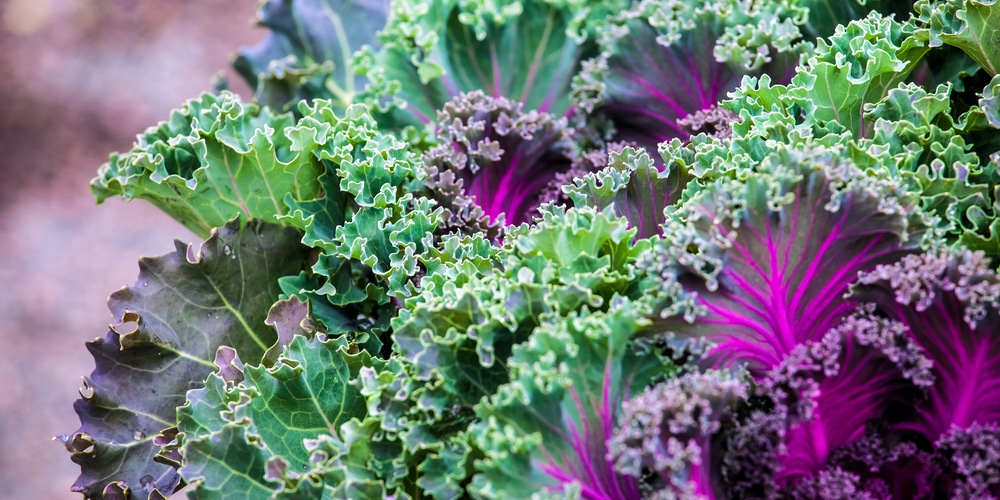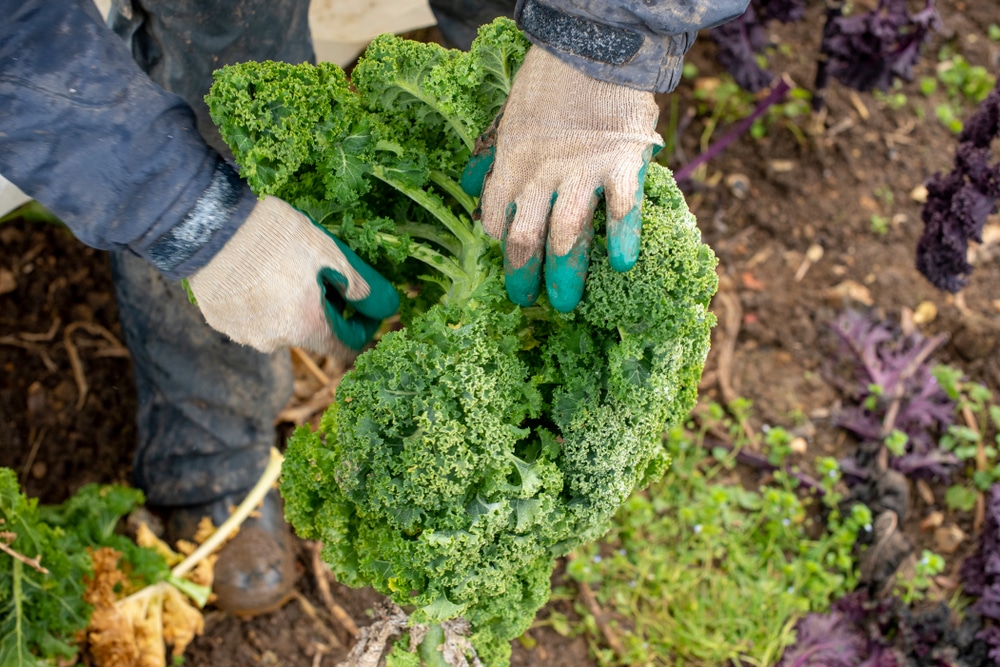Kale is a popular vegetable that comes in various leafy types and colors. It’s easy to grow and can thrive in many different climates and growing conditions. There are several stages to the kale life cycle, from planting the seeds, watching new seedlings spout, to finally harvesting your kale. This article will discuss kale growing stages.
Kale Growing Stages

Here’s what to expect when growing kale. It takes up to 15 weeks for kale to grow and go through the following stages:
- Planting
- Seedling spouting stage
- Replanting and growth stage
- Maturity
- Harvest time
Planting
The first stage of the kale life cycle is planting your seeds. Kale seeds can be directly sown to the ground, which means you plant them in the soil where they will grow. Alternatively, you can start your seeds indoors or in a greenhouse. This is a great option if you want to start your kale indoors before the growing season begins so the plants can be transplanted to another growing location later. In this way, you’ll be able to reduce damage due to frost.
Choosing a sunny and well-draining location is crucial whether you plant seeds directly in the ground or in small containers. The soil should be moist and well-fertilized. When planting your seeds outdoors, it’s best to grow them in the fall or spring, as kale is a cool season crop.
Seedlings sprouting stage
After planting kale seeds, you’ll need to ensure that they are kept in a warm area and are kept moist. These conditions will encourage germination, and the seeds will sprout in 5 to 8 days.
Once your seeds have sprouted, they will be small plants with several tiny leaves. This is when you can provide them with supplemental light if necessary. For best results and healthy kale plants, ensure that your seedlings are exposed to at least 6 hours of sunlight daily.
The first leaves that will sprout from your kale seeds are called cotyledons. They are tiny and round at this stage. Soon after, plant leaves will start to form and grow larger leaves.
It would be best if you also watered your young kale seedlings daily, but be careful that they don’t become waterlogged.
Transplanting and Growing
Once your seedlings have grown several inches tall, you can transplant them from their indoor containers into the ground. Once they are planted in their growing location, water them thoroughly and mulch around each plant’s base. This will help keep weeds away while providing the plants warmth and nutrients.
It’s essential to make sure that your plants are spaced appropriately. The kale plants will get a lot bigger once they mature, so you’ll need enough space between each plant for them to grow correctly. If you’re planting in rows, ensure the spacing is at least 12 inches from one row to another. Space each seedling at least 12 to 18 inches apart.
Mature Kale Plants
Once your plants have grown taller and made a nice, full canopy of leaves, they are ready to be harvested. The kale plants will continue growing throughout the summer months and possibly even into the fall if you live in a mild climate.
Most varieties of kale grow to be about 18 inches tall. Some types get much larger, with the record going to Sutherland kale which grows to heights of around 4 foot tall (122 cm). Siberian kale s slightly shorter at 3 feet (91 cm) tall.
Harvesting
If you harvest kale correctly, it will continue to regrow new leaves and provide fresh greens for months. You can gently pull or cut the leaves from the sides of the plant. Take the leaves nearest the ground first to encourage new growth. Leave the leaves at the top of the plant and throw away discolored leaves.
If you live in zones 7 through 10, your kale can keep growing all winter as long as it’s harvested correctly.
Conclusion
By following these simple tips, you’ll be able to grow the healthiest kale plants possible. Kale can be grown in a window box, raised bed, or vegetable plot. It’s a cool season crop that can grow well into the winter in many areas.
Ensure that you water your kale regularly; your plants will provide you with lots of leaves for salads, wraps, and other seasonal recipes!
